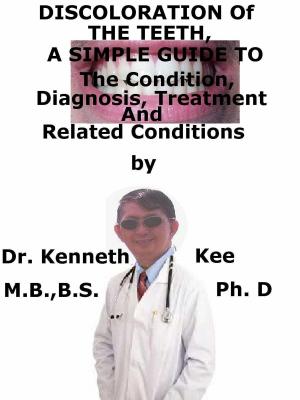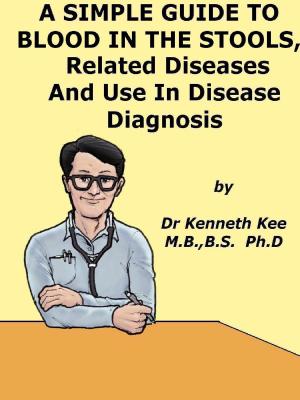Orchitis, (Inflamed Testis) A Simple Guide To The Condition, Diagnosis, Treatment And Related Conditions
Nonfiction, Health & Well Being, Health, Ailments & Diseases, Genitourinary & STDs, Medical, Specialties, Reproductive Medicine| Author: | Kenneth Kee | ISBN: | 9781370158867 |
| Publisher: | Kenneth Kee | Publication: | January 1, 2018 |
| Imprint: | Smashwords Edition | Language: | English |
| Author: | Kenneth Kee |
| ISBN: | 9781370158867 |
| Publisher: | Kenneth Kee |
| Publication: | January 1, 2018 |
| Imprint: | Smashwords Edition |
| Language: | English |
Orchitis is common infection in children especially after mumps infection and injuries to the testicular region.
They also occur in adults after contacting sexually transmitted diseases.
There is pain and swelling in the testes.
Orchitis is a medical disorder caused by the inflammation of one or both of a man's testicles, usually caused by an infection such as mumps or Chlamydia.
Orchitis is acute bacterial or viral infections of the testis.
Inflammation of the testes can also be due to epididymitis, an infection of the tube that carries semen out of the testicles.
This is called epididymo-orchitis.
The epididymis is the small organ on top of the testis.
The illness usually occurs in:
- Childhood, usually related to mumps infection
- Sexually active males
- Epididymitis is more common than Orchitis
Both bacteria and viruses can cause orchitis.
Bacteria that commonly cause orchitis are:
- Escherichia coli,
- Staphylococcus,
- Streptococcus
- Mycobacterium tuberculosis
An infection of the prostate may happen together with orchitis.
Epididymitis (inflammation of the tube on the back of the testicle) can result in orchitis.
Bacteria that produce sexually transmitted diseases (STD) can cause orchitis in sexually active men: - Gonorrhea,
- Chlamydia
- Syphilis
The patient may be at risk if the patient: - Have many sexual partners,
- Are involved in high-risk sexual behavior,
- Have a sexual partner, who has had an STI,
- Have a history of STIs
The virus that produces mumps can also result in orchitis.
Very frequent in young boys (though rare in boys younger than ten years old), orchitis starts in 4 to 6 days after mumps develops.
Some boys will develop orchitis from mumps and end up with a disorder called shrinking of the testicle (testis atrophy).
That is why it is so critical for all children, particularly boys, to have vaccinations to prevent them from getting mumps.
Other Viral infections that can cause Orchitis are Measles.
The patient may be at risk of non-sexually transmitted orchitis: - If the patient has not had proper vaccination against mumps,
- If the patient gets urinary tract infections,
- If the patient is older than 45,
- If the patient frequently has a catheter placed into the bladder
With orchitis, the patient may have a rapid occurrence in one or both testes of pain that may radiate to the groin.
One or both of the testicles may appear tender, swollen, and red or purple.
The patient might have a "heavy” feeling in the swollen testicle.
The patient might see ejaculation of blood in the semen.
The patient may have hematuria (blood in the urine)
Other symptoms are:
- High fever,
- Nausea,
- Vomiting,
- Pain with urination,
- Pain from straining with a bowel movement,
- Groin pain,
- Pain with intercourse,
- Simply feeling ill
In orchitis, the symptoms may come on and progress more gradually.
Orchitis causes a localized region of swelling and pain in the testis for one to many days.
Later, infection increases to involve the whole testis.
Painful burning feeling before or after micturition and penis discharge may also occur.
Signs: - Scrotal swelling of testis
- Induration of scrotum wall
- Tenderness of scrotum
- Tenderness of the testis if orchitis is present
Diagnosis is by:
Appearance of testis
History of Mumps or Sexual Transmitted Disease
MRI testis
Treatment is by:
Antibiotics
Painkiller
Scrotal support
Ice packs
Rest and Fluid
Surgical drainage if abscess is present
Surgical treatment of testicular torsion
TABLE OF CONTENT
Introduction
Chapter 1 Orchitis
Chapter 2 Causes
Chapter 3 Symptoms
Chapter 4 Diagnosis
Chapter 5 Treatment
Chapter 6 Prognosis
Chapter 7 Epididyamitis
Chapter 8 Testis Torsion
Epilogue
Orchitis is common infection in children especially after mumps infection and injuries to the testicular region.
They also occur in adults after contacting sexually transmitted diseases.
There is pain and swelling in the testes.
Orchitis is a medical disorder caused by the inflammation of one or both of a man's testicles, usually caused by an infection such as mumps or Chlamydia.
Orchitis is acute bacterial or viral infections of the testis.
Inflammation of the testes can also be due to epididymitis, an infection of the tube that carries semen out of the testicles.
This is called epididymo-orchitis.
The epididymis is the small organ on top of the testis.
The illness usually occurs in:
- Childhood, usually related to mumps infection
- Sexually active males
- Epididymitis is more common than Orchitis
Both bacteria and viruses can cause orchitis.
Bacteria that commonly cause orchitis are:
- Escherichia coli,
- Staphylococcus,
- Streptococcus
- Mycobacterium tuberculosis
An infection of the prostate may happen together with orchitis.
Epididymitis (inflammation of the tube on the back of the testicle) can result in orchitis.
Bacteria that produce sexually transmitted diseases (STD) can cause orchitis in sexually active men: - Gonorrhea,
- Chlamydia
- Syphilis
The patient may be at risk if the patient: - Have many sexual partners,
- Are involved in high-risk sexual behavior,
- Have a sexual partner, who has had an STI,
- Have a history of STIs
The virus that produces mumps can also result in orchitis.
Very frequent in young boys (though rare in boys younger than ten years old), orchitis starts in 4 to 6 days after mumps develops.
Some boys will develop orchitis from mumps and end up with a disorder called shrinking of the testicle (testis atrophy).
That is why it is so critical for all children, particularly boys, to have vaccinations to prevent them from getting mumps.
Other Viral infections that can cause Orchitis are Measles.
The patient may be at risk of non-sexually transmitted orchitis: - If the patient has not had proper vaccination against mumps,
- If the patient gets urinary tract infections,
- If the patient is older than 45,
- If the patient frequently has a catheter placed into the bladder
With orchitis, the patient may have a rapid occurrence in one or both testes of pain that may radiate to the groin.
One or both of the testicles may appear tender, swollen, and red or purple.
The patient might have a "heavy” feeling in the swollen testicle.
The patient might see ejaculation of blood in the semen.
The patient may have hematuria (blood in the urine)
Other symptoms are:
- High fever,
- Nausea,
- Vomiting,
- Pain with urination,
- Pain from straining with a bowel movement,
- Groin pain,
- Pain with intercourse,
- Simply feeling ill
In orchitis, the symptoms may come on and progress more gradually.
Orchitis causes a localized region of swelling and pain in the testis for one to many days.
Later, infection increases to involve the whole testis.
Painful burning feeling before or after micturition and penis discharge may also occur.
Signs: - Scrotal swelling of testis
- Induration of scrotum wall
- Tenderness of scrotum
- Tenderness of the testis if orchitis is present
Diagnosis is by:
Appearance of testis
History of Mumps or Sexual Transmitted Disease
MRI testis
Treatment is by:
Antibiotics
Painkiller
Scrotal support
Ice packs
Rest and Fluid
Surgical drainage if abscess is present
Surgical treatment of testicular torsion
TABLE OF CONTENT
Introduction
Chapter 1 Orchitis
Chapter 2 Causes
Chapter 3 Symptoms
Chapter 4 Diagnosis
Chapter 5 Treatment
Chapter 6 Prognosis
Chapter 7 Epididyamitis
Chapter 8 Testis Torsion
Epilogue















